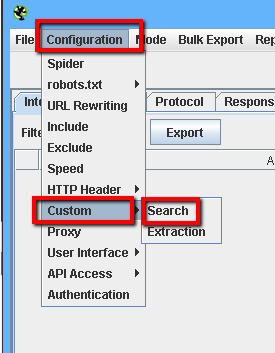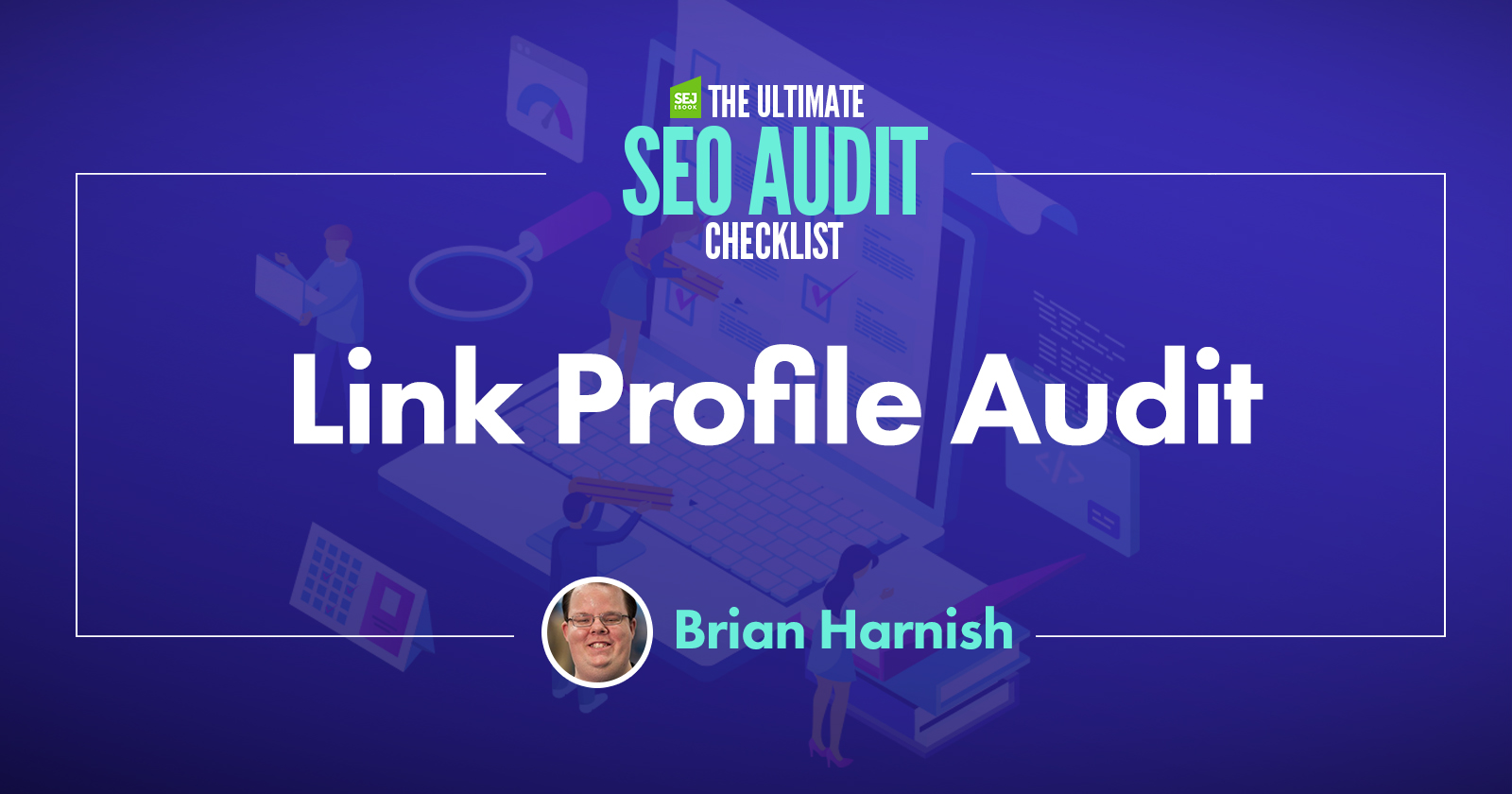Performing a link profile audit is a critical part of any SEO endeavor.
Regular link profile audits can help you identify negative SEO link attack attempts, assess penalties, and remove bad links before they have an impact on your site’s ranking.
Preventive measures are always better than reactive measures.
As if that were not enough, recent updates from Google shows that they are slapping penalties even on sites that have not built links for the past five years (at least).
Ongoing link profile audits are critical toward helping your site continue to have a healthy link profile, and making sure bad links don’t get bad enough to cause you issues later.
Some in the industry refer to it as link remediation.
Consider it mitigation of risk, or rather, link risk management.
By the way, what is negative SEO?
Negative SEO is an attempt by a competitor to build bad links back to your website in order to artificially inflate its link profile.
The end intended result is that Google will think you’re building those links, and demote your site algorithmically as a result.
I have seen several successful negative SEO link attacks and I have no doubt that they exist.
Everything on these websites was going swimmingly well until they were attacked by a noticeable increase in spammy inbound links.
This is why periodic link profile audits are critical toward maintaining a healthy link profile and making sure that your bad backlinks don’t get bad enough to bite you.
Let’s take a look at the applications we will need to proceed with a link profile audit.
The Applications
For link profile audits, I like using a number of different applications as data sources, because the more data sources you have, the more accurate your link risk management tasks will be.
If you have access, I highly recommend using at least five sources.
These five sources include (but you can always use more):
- Google Search Console
- SEMrush
- Majestic
- Ahrefs
- Raven Tools
- Moz Link Explorer
Link Detox
Link Detox by Christoph Cemper is a program that can do all the heavy lifting when it comes to compiling, storing, organizing and processing your link profile data.
These programs will provide a great treasure trove of data that we can then use for furthering our link profile audit efforts.
Let’s begin by collecting our link data.
Starting with the Data Sources
Begin by identifying the top three sources of links you have access to. Typically, Google Search Console, SEMrush, and Majestic are good sources to start with.
Next, compile them into a single report and run them through Link Detox. Don’t forget to download and import your disavow file.
This will help keep your already-disavowed links ignored and Link Detox won’t count them when it performs its audit.
In addition, Link Detox will automatically dedupe all of the duplicate entries, so you shouldn’t have to identify any duplication issues.
Go through Link Detox and begin training the tool’s AI to learn about your link profile by upvoting and downvoting links.
It’s also a good idea to visit the sites and figure out what Link Detox considers spam and not spam.
By using this upvoting/downvoting process, you can train the tool to include or exclude links when it reprocesses your report.
It’s also a good idea to classify your link anchor text if you’re prompted to do so. Doing this will greatly increase the accuracy of your Link Detox audit reports.
The more you train the tool’s AI, the better it will get at identifying the bad links in your link profile, as well as the good ones.
There are several things to watch out for when investigating issues with your link profile.
These are all my opinion and may not necessarily apply to your site, but it has been my experience that these items are crucial to watch out for and can impact your link profile positively or negatively, depending on how they are implemented.
As per usual, anything used super excessively could be interpreted as spam.
What to Check
1. Positive Link Velocity
This refers to how much your link profile is expanding and how fast it is expanding.
A link profile that is expanding too fast could trigger a red flag to Google, as this could be seen as a link manipulation tactic.
2. Negative Link Velocity
Too many links being removed at once.
3. Contextual Links
Links that are strategically placed within content that has context on the actual page.
Bonus points if that content is natural, not spammy-sounding, and has some significant meat to it.
Contextual links are good, but yet again, these could be manipulated, too – and you should keep an eye out for excessive contextual linking.
4. ‘Sponsored Links’ or Other Words Around Link
Links that are obviously paid, or otherwise sponsored.
5. Links from ‘Hub’ Pages
Links that are from top resources on the topic.
6. Links from Authority Sites
These are links from typically large authority sites in any one niche.
Having many links from great authority sites is a good thing, and is something that shouldn’t count against you.
7. Natural Link Profile
A natural link profile has most link techniques kept to a minimum and a more natural distribution of link anchor text that doesn’t lean in any way toward significantly large amounts of any one type of anchor text.
In other words, it looks like many people from many different niches (or within the same niche) linked to the site, rather than one person linking over and over.
8. Reciprocal Links
Basically “link to me and I will link to you” for the sake of cross-linking, which is a type of linking scheme that is prohibited by Google in their Google Webmaster Guidelines.
9. User-Generated Content Links
These are basically links appearing in the comment portion of blogs.
10. Excessive Blog Comments
Blog comments are easily manipulated, and thus excessive blog commenting could be interpreted as coming from a black hat program like Scrape Box, which is known for its blog commenting capabilities.
11. Links from 301 Redirects
301 redirects by themselves are OK and links from 301 redirects should not hurt your site.
But having excessive redirects can:
- Weigh down your site.
- Cause bandwidth issues (may not be an issue if you can afford significant amounts of traffic hitting your 301 redirects).
- Cause additional issues with crawling if they aren’t managed properly.
They can become so excessive that management of them could be a challenge.
12. Internal Link Anchor Text
Any excessive use of any one type of internal link anchor text is considered spam, and something that should be avoided.
For example, linking to “Georgia widgets” over and over shouldn’t be done. Instead, your link profile should feature varied anchor text.
Try to diversify it so it appears natural rather than manipulative.
13. Backlink Age
Some SEO pros are of the opinion that backlink age is a ranking factor based on a Google patent.
14. Number of Outbound Links on the Page
Some SEO professionals believe that a page with many outbound links performs significantly less than a page with a healthy amount of outbound links. However, this is no longer true.
Former Googler Matt Cutts has stated that they dropped the 100 links per page guideline, but they may take action if the links are too spammy.
Subscribe for Daily Search Insights
AI, PPC, and digital marketing news distilled to fuel success. Join the other 75k marketers!
15. Site-wide Links
Cutts talked about this in his video, How Does Google Consider Site-Wide Backlinks.
He confirmed that they compress the links together into one link but that they may take into consideration different actions from a manual webspam analyst perspective if they are too spammy.
16. Excessive Focus of Link Anchor Text on Any One Keyword
It’s generally accepted to have a link profile where no more than 20% of your links come from one type of site, one type of spam, or focused on one single keyword.
The more variety, the better.
17. Too Much Link Velocity, Too Little Link Velocity
If too many links are being acquired in too short of a time, this can negatively affect your site’s performance in the SERPs.
This is especially true if it becomes a weighty part of your link profile (approaching 50 percent or much more).
Too little link velocity isn’t necessarily something to be concerned about.
Link velocity becomes a concern if it’s from one source coming too much, too fast, and destroying your link profile too rapidly for any other techniques to actually help.
18. Too Many Links Coming From One Domain Too Fast (Part of Link Velocity, But an Investigative Factor)
This could send a signal to Google that this domain is actually helping manipulate linking factors on the target site.
The idea here is that too much of anything is a bad thing, and most linking techniques should follow linking in moderation – if it’s done too much and too fast, it could be considered spam.
19. Excessive Forum Profile Links
These types of links could point to a program like XRumer or Scrape Box being used on the black hat side to manipulate links.
Forum profiles can easily be manipulated and created with these programs.
20. Links From Real Sites vs. Splogs
A splog, or spam blog, is pretty quickly identifiable these days.
If blogs are created as part of a major network, they may have the same template, they may have similar content, and all the content may look like gibberish.
If the splog network is sufficiently advanced, they may even take care of creating high-quality content.
But most factors between these splog networks will be similar, and they will be easily identifiable.
21. Guest Posts
Guest posts get a bad rap these days because they are easily manipulated and can go the way of article marketing if they aren’t properly executed.
But if they are executed correctly, they can be a good benefit, especially if they add unique content with significantly high value.
Guest posts can become bad when it’s the only thing you’re doing to build your link profile.
22. Unnatural Influx of Links
Already covered and mentioned elsewhere in this document in the link velocity section.
23. Google Penalty
Using Barracuda’s Panguin tool can help you identify not only if you have a penalty, but which penalty you have.
It includes a program that overlays your Google Analytics data with dates and information about specific penalties – not just Penguin but Panda and many other algorithmic and manual actions that have been levied by Google.
It can help you diagnose your problem much easier.
If you have identified exactly when you incurred a penalty, it’s a good idea to go into Google Search Console and Google Analytics to find supporting data before taking action.
If you don’t have supporting data that occurred at exactly the time of the penalty, it’s likely that some other major change has affected your site.
24. Link Profile with High Percentage of Low-Quality Links
Many links from low-quality sites – such as those frequently used by spammers – are known as the following:
- Gambling
- Porn
- Viagra
- Excessive blog comment links
- Sites with excessive duplicate stolen content
- Blog Networks
- Article Marketing sites
The following are all specifically called out in Google’s Webmaster Guidelines as spam:
- Links with optimized anchor text in articles.
- Press releases distributed on other sites done solely for the link.
- Any low-quality directories or low-quality social bookmarking site links.
- Any PPC advertising links that pass PageRank to the buyer of the ad.
25. Linking Domain Relevancy
Relevant links from sites in the same/similar niche are all known as being more powerful than links from sites that are unrelated.
During your link profile checks, check that the domain itself is relevant and doesn’t cause any major spam issues.
If it’s spam and there’s no way to contact the webmaster to ideally have them remove the link, consider adding it to your disavow file.
26. ‘Poison’ Anchor Text
Having significant amounts of this kind of anchor text (basically anything from well-known spam niches like gambling or viagra) could negatively impact your site and could be considered spam.
This is a popular negative SEO technique, where a competitor will point a bunch of links with spammy anchor text to another competitor, effectively decreasing their rankings.
Although Google continues to maintain that participating in negative SEO will rarely do any harm.
Identify any major instances of significant amounts of poison anchor text happening.
If you catch it and disavow the links, it is likely they will not cause any significant issues for your site.
If you don’t and you find that you have been the victim, it is a good idea to contact a member of the Google Webspam team (e.g., John Mueller or Gary Illyes) and have them investigate.
Time to Compile the Disavow File
After you’ve gone through your entire link profile and identified all the bad links that you want to disavow, it’s time to compile your disavow file and upload it using Google’s Disavow Tool for your site.
What to Check
27. Your Disavow Files
Make sure your disavow file is free of errors. Excessive www and some formatting issues may occur before you upload your file.
To be safe, copy/paste your disavow file into notepad, save as txt file, and upload.
28. Schema.org Microformats
Schema.org has become somewhat of a cult phenomenon.
It isn’t quite as popular among SEO professionals as other techniques since it is difficult to prove its effectiveness, but some believe that pages supporting these microformats may rank above pages without it.
But there is no doubt that it adds support for Google’s featured snippets, which may help rankings when it comes to featured snippet results and the Google Carousel for different niches.
Identifying Schema.org microformats in your audit will help you figure out how to optimize next, and where to go from here.
You can establish a baseline of Schema.org optimization and identify what needs to be further optimized and other opportunities for growth.
You can use Screaming Frog to identify Schema.org microformat code that exists on-site.
How to Check
To identify pages that have Schema.org coding, you’ll want to use Custom Filters.
Simply bring up Screaming Frog and click on Configuration > Custom > Search.

Enter the following code in the Custom Filter Configuration to identify whether that page has Schema markup: itemtype=http://schema.org
Depending on how it’s coded (don’t forget to check for this first!), you may want to enter: itemtype=”http://schema.org”
This will identify any main parent code items that have Schema.org coding, but won’t identify items specifically.
If you wanted to identify a specific type of Schema markup, you would use that exact Schema.
For example, you would have to use itemprop=”name” to find any coding that contained that particular Schema value.
It all depends on your niche and the Schema that you want to identify.
Be sure to visit Schema.org for a comprehensive listing of all available Schema formats.
Image Credits
Featured Image: Paulo Bobita
Screenshot taken by author


